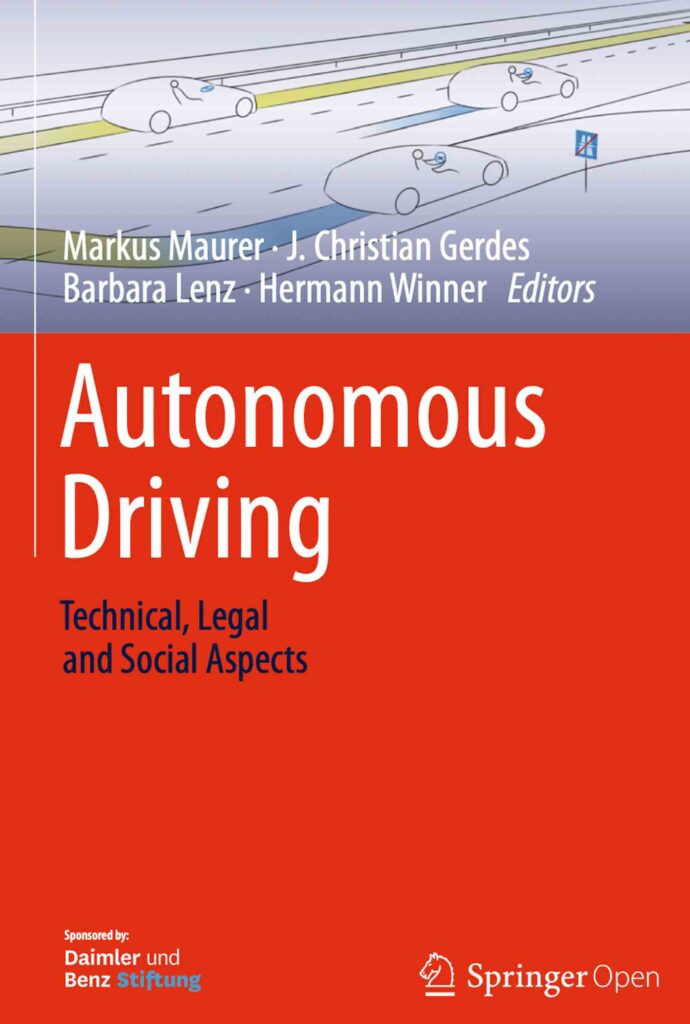
2017-2022 | Author of the book project:
This book presents the most important milestones of the research on automated and autonomous driving in the United States, Japan and Europe throughout five decades (1950-2000). Drawing on sources from the automotive industry, electrical engineering, the robotics and AI-domain and military institutions, it retraces the transition from the guidance-cable approach to vehicle-based sensor and vision systems. Giving a detailed overview of the technical concepts, artefacts, research vehicles and robots, the book presents the transnational engineering efforts that started long before Silicon Valley entered the field. In addition, the book also uniquely details the role of the military in the domain of vehicle automation. More than 60 photographs, some of which have never been shown before, are featured in the richly illustrated book. This all ensures the book is of great interest to historians of technology, practitioners in engineering disciplines, scholars working in mobility studies, journalists, and political decision makers.
Funded by the Federal Ministry of Defence, Germany.

2015 | Degendering the driver? Autonomous Vehicles, Mobility and Gender
Research Assistant (15.1.-30.6.2015) of Prof. Jutta Weber, University of Paderborn, Institut für Medienwissenschaften / Project funded by the Ministry of Innovation, Science and Research of the State of North Rhine-Westphalia, Germany.
Management of a publication project (editorial process):
“Degendering the driver”: Special issue of Transfers – Interdisciplinary Journal of Mobility Studies.
Accomplished tasks and results:
– Bibliographical research (data bases): Gender and automobile (state of the art)
– Call for papers
– Recruitment of 7 authors
– Communication with the authors and the journal editors
– Organisation of a peer review
– Editing the introduction

2013-2014 | Fellow of project Villa Ladenburg:
Autonomous driving on the roads of the future
Autonomous cars will increasingly take over our driving responsibilities. The goal is to eliminate accidents or to at least reduce their severity. Sensors will recognize signs and traffic lights. The car will be able to avoid traffic jams, stay in its own lane, and communicate with other cars and with the traffic infrastructure. In dangerous situations, it will activate an early-warning system and automatically brake.
But what will the societal consequences of autonomous driving be? How will our driving habits change and how can a general readiness to accept self-driving cars be achieved? What social, psychological, legal and economic factors need to be taken into consideration?
The Daimler and Benz Foundation’s Villa Ladenburg Project supports research into all of these questions with an eye to the development of new traffic norms at the national and international level.
Funded by Daimler and Benz Foundation, Germany

2013-2017 | Contract researcher.
imagineTrains. The Imaginary of the Train among Decision Makers and Train Users.
The international, multi-disciplinary and comparative study, conducted by research teams from France, the USA, South Africa, India and China, examined how the “imaginary” of political leaders influence the decisions they make about railways and rail infrastructure.
As a member of the French team, I wrote a chapter (in French, 32 pages) of the final report on the imaginary of the train in cinema covering the following topics:
- Cinema – a source of imagination for decision makers ?
- Symbolism and train spaces in cinema
- Night train, dining-car and scenic landscapes
- The “imaginary” of the TGV
- Train of the future and fantastic train
- The imaginary of the freight train
- Deportation, resistance et liberation: trains during the Second World War
- The train robbery in western movies
- From films to decision-makers and from decision-makers to films
French team: Laboratoire Identités Cultures Territoires (ICT), Université Paris Diderot and researchers from the association Passé Présent Mobilité (P2M) directed by Dr. Arnaud Passalacqua.
Project manager : Max Bergman
Members of the French-American Team : Allen W. Batteau, Mathieu Flonneau, Frederick C. Gamst, Sébastien Gardon, Fabian Kröger, Léonard Laborie, Harold Mazoyer, Marie Clotilde Meillerand, Arnaud Passalacqua, Marie-Noelle Polino, Valérie Schafer, Mimi Sheller, Susan Zielinski.
Funded by FORUM VIES MOBILES/THE MOBILE LIVES FORUM, France.
Last update: